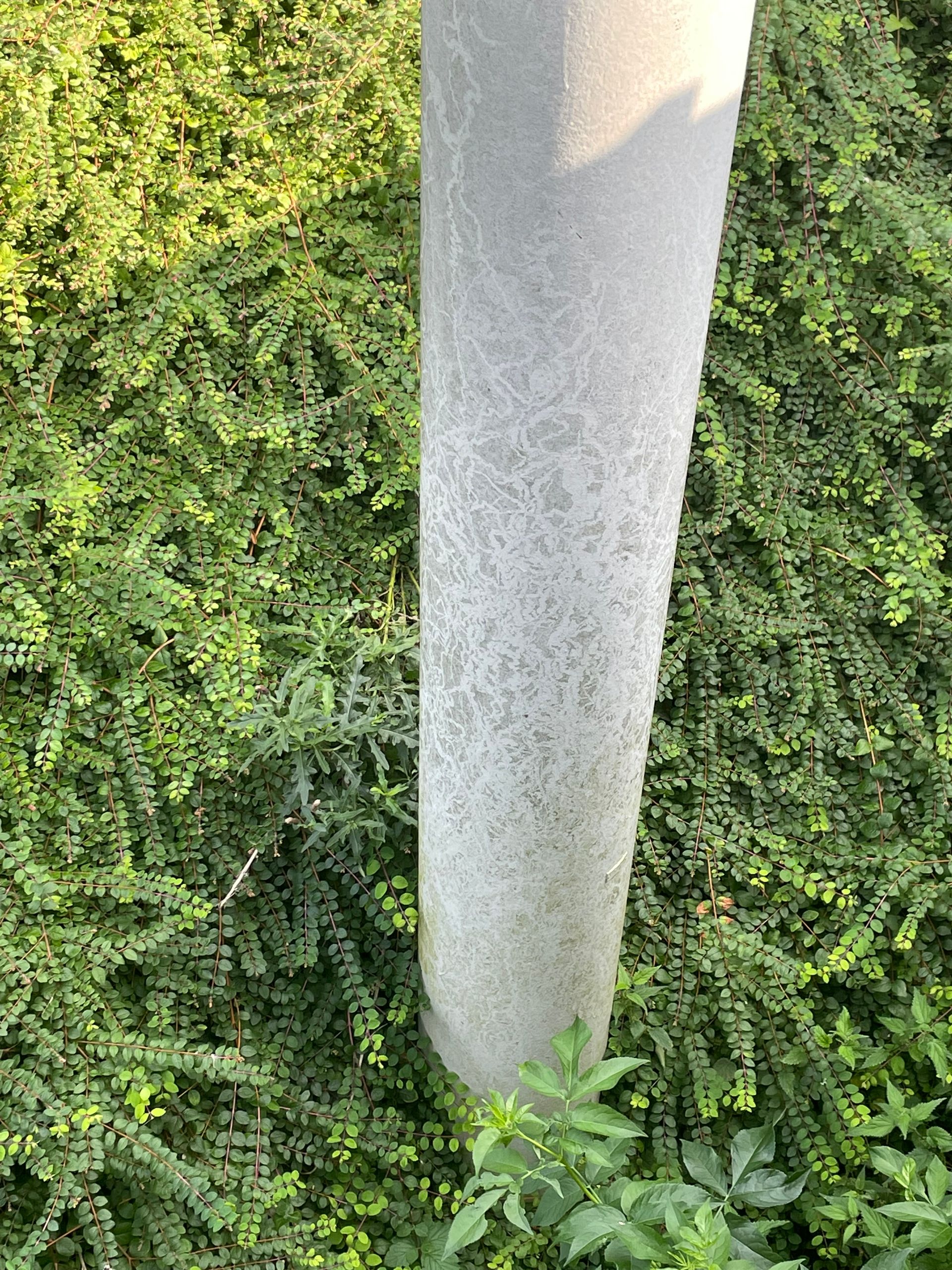Before visiting the university campus at Lund, I had seen LTH-fontänen in the images that Maddie had assembled over the last two years or so, from various sources. Most particularly, I had retained in my mind’s eye those low-resolution images from newspaper clippings that show the fountain in its moment of grandeur or in its moments of seeming failure.
The vantage points of these rhetorical images seem somehow quite removed from my first encounter with its remaining skeletal membranes. The features most pronounced to me were the bridge that we walked across, moving under and through LTH-fontänen proper; the thick knotted clouds of vegetation from which slender vertical pillars sprouted like anaemic space-age Gunnera stalks; the multi-tiered, desiccated platforms that looked for a moment like a modernist take on a Chinese ornamental and ritual gateway–a dis-ornamented paifang–not an architectural folly as such but rather an understated (though nonetheless palpable) marker of a threshold. Rather than marking a transition between discrete spatial zones, LTH-fontänen –misrecognised as gateway–proposes, as with other ritual architectures, a symbolic transition from the ordinary/the secular/the “just there”, to the extraordinary/the enchanted/the “things otherwise”.
On first approach to this 'Fountain Gate', it is the blunt constellation of stuff outdoors, exposed to the elements, that imposes itself: the rain-darkened wooden benches along the low wall of the bridge; the impassable clusters of briar and hedge visible below when looking over this modest side wall (there is no good reason to go down into that crowded shrub-world thicket, but you must look at it); then a grey painted pole with the filigree patterns of last summer’s vegetation spiralling quietly around its surface, a fine grisaille painted patiently, yet leisurely, by a now-faded summer's day (a day hard to recall amidst all this damp); then look upwards to see lank wires tracing the line of the now-gone water basins; and those implausible scaffolds, load-bearing platforms without their heavy burden; and the occasional passer-by that passes by un-remarked and un-remarkable. For the most part, it’s just some stuff that’s just there. Stuff to walk past. Ho-hum. Just stuff. Just sitting there. The Fountain Gate’s down-at-heel persistence allows it to incautiously accumulate a patina of adjectives and adverbs, the sleeper mossed over by my damp proverbial weathering.
But then one passes through. And having passed through The Fountain Gate into the world otherwise, it is all a crazy noise of cascading water, laughing crowds and nick-naming mockery that calls out "Laxtrappan!" "Döda fallet!" "Fontänen von Tänen!" It is the past future continuous that hails us: The architect–he–seemed to say that it would all be washing over our heads here, right at this very spot, where we would be standing perplexed and wondering. Could this be a matter of that old Swedish modern that we arrivants have now come upon belatedly? That old longing–enacted through a second techno-nature–for the world to be re-enchanted?
Along this path of an architect’s desire, the humility of just stuff is tested and taunted for its ambitions of grandeur. But even just stuff, even just the dullest of stuff on the dullest of day, must flow and must churn in its own unravelling eddies, adjusting itself to what might just be the justness of stuff, this stuff just here.

